
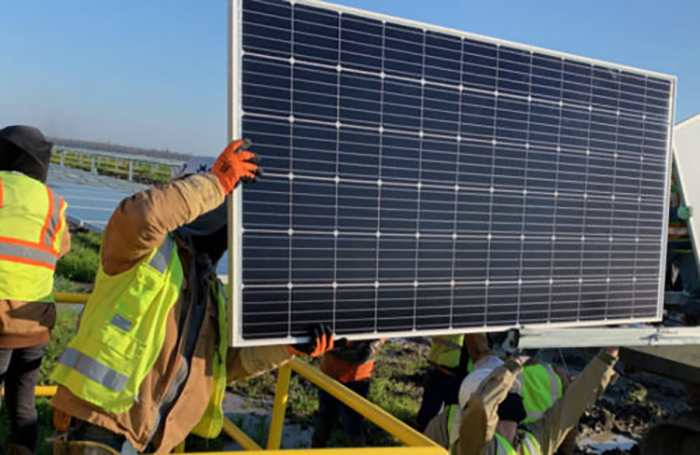
The Sitting Solutions project has released its new 'Sitting Policy Handbook', a guide designed for state leaders and advocates of renewable energy sitting reform. The manual uses recent state reforms and real-world examples as recommendations for policy formulation and implementation. The site solution project was initiated by Clean Tomorrow, a non partisan, results oriented organization dedicated to advancing practical decarbonization solutions. States don't need to start from scratch - successful models already exist, "said Nelson Falkenburg, co-author and sitting policy manager of the Sitting Solutions Project. This manual demonstrates how states can adopt clear, fair, and predictable sitting rules while promoting the growth of clean energy and strengthening community trust. ” The United States is facing increasing demand for electricity and soaring electricity costs. Renewable energy projects, such as solar energy, can stabilize and reduce energy costs for stakeholders. The Site Selection Policy Manual calls for a calm review of outdated and fragmented state-level site selection processes. This manual combines internal analysis and external research, and utilizes insights from industry partners, including Data for Progress and strategic economic research. The 'sitting policy field guide' advocates the use of clear rules, timely decision-making, fair procedures, economic opportunities, community interests, and land management positioning policies. Sitting is a bottleneck that hinders the potential of clean energy in the United States, "said Alex Breckel, co-author of the Sitting Solutions project and senior director of project planning. By implementing the right policies, states can reduce energy costs for consumers, attract investment, and bring real benefits to workers, landowners, and host communities.

Seal Solar is building a 13.05-megawatt array for Baptist Health, the largest private non-profit healthcare organization based in Arkansas. This array is one of the largest non-public scale systems installed in Arkansas. Seal Solar is installing 22300 double-sided solar panels on 49 acres of land in the former rice field. Baptist Health is delighted to be a part of this new solar farm - a step towards generating cleaner, more sustainable electricity and reducing costs, "said Brent Beaulieu, Chief Financial Officer of Baptist Health. This project reflects our commitment to becoming a more environmentally friendly organization and is built upon our strong energy efficiency record, with Baptist Health Medical Center Little Rock receiving an energy star rating of 83%. ” Seal Solar has a long history of collaborating with businesses, farmers, and non-profit organizations across Arkansas to incorporate solar energy and energy storage into their energy demand mix. We are proud to collaborate with the Baptist Health team to help them meet their needs for sustainability and cost savings, "said John Buckley, project manager at Seal Solar, who oversees the construction of the project. The solar array of the Vermont Health System is scheduled to be completed in early spring 2026 and connected to Entergy Arkansas' power grid.
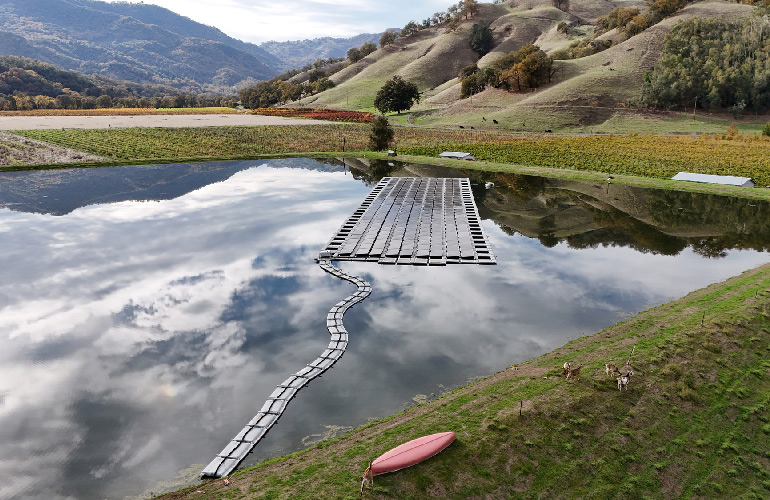
Nelson Family Vineyards is located in Mendocino County, California, and has installed a floating solar system on an irrigation pond to operate 100% using renewable energy. This innovative project enables this 74 year old, 1800 acre family farm to fully utilize clean energy without reducing any agricultural land production. Combined with the existing solar system on the winery roof, this floating photovoltaic (FPV) system is expected to generate approximately 200000 kilowatt hours of electricity annually - enough to meet the electricity needs of the winery, agricultural pumps, wine tasting rooms, shops, and 12 on-site households. It is predicted that this will save Nelson Family Vineyards approximately $90000 annually, significantly reducing operating costs and also contributing to its commitment to sustainable operations. With the sharp rise in electricity costs on the grid, achieving energy independence will have a significant and immediate impact on our operations. This investment will save us a lot of money every year, "said Tyler Nelson, owner of Nelson Family Vineyards. The best thing is that because the system floats on the pond, it doesn't occupy an acre of production land. This means that all of our 1800 acres of land can be used for the most important things - agriculture and protecting wildlife habitats The FPV device will also serve as a key on-site site for research on the ecological impact of FPV technology. Scientists from the Wildlife Energy Center at the University of California, Davis will use this system to study how FPV systems affect water quality, aquatic life, microclimate, and biodiversity in agricultural environments. One of the main focuses of the research will be to determine whether the shadow of floating solar panels can help control invasive planktonic animals (water fleas) and aquatic plants that often clog efficient drip irrigation filters in vineyards - an issue that requires hourly maintenance during peak seasons. By limiting sunlight, solar panels are expected to slow down the growth of aquatic organisms and plants, reducing labor-intensive maintenance and the use of chemicals. The floating solar system was designed and installed by Noria Energy, a local contractor and affiliated company of Sunrock distributed power generation. We are honored to collaborate with the Nelson family and the University of California, Davis to help wineries save costs, achieve energy self-sufficiency, and protect natural resources, "said Ron Stimmel, President of Noria Energy. This project demonstrates how FPV technology can turn underutilized water areas into reliable and high-yield power sources, enabling growers to maintain full productivity of their farmland while improving operational sustainability

After solar tile manufacturer GAF Energy announced the closure of its research and development facility in San Jose, California and relocation of its headquarters to Texas, its excess manufacturing equipment will be auctioned off. Equipment within the San Jose facility. Rooftop expert GAF launched the energy sector in January 2022 and released studable Timberline solar tiles. The company initially operated in a 50 megawatt facility in San Jose and then opened a second manufacturing site in Georgia, Texas in 2023. The latest news shows that the annual production capacity of the GeCheng factory is 250 megawatts, and the workers produce solar tiles by laminating solar cells on TPO roof materials. In October, GAF Energy Company laid off 138 employees, effective December 13th. The company also announced the relocation of its headquarters to Gree City and the focus on manufacturing. Given the ongoing changes in the solar industry, we are adjusting our business and team to focus on the key markets where solar energy is most attractive to builders and homeowners, "said Martin de Bono, President of GAF Energy, in a statement. The location in San Jose is currently auctioning off excess equipment. A surplus second sale is currently underway in Texas. Earlier this year, GAF Energy launched its second-generation evolved Timberline solar product with increased power output. The ES 2 product has achieved 57 watts per watt.
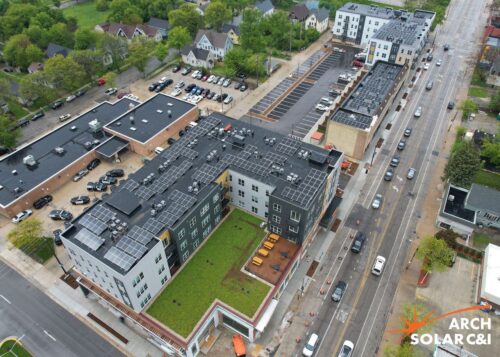
Arch Solar announced the installation of a 191 kW DC solar project on a newly constructed affordable housing and community library complex in Milwaukee, Wisconsin. It is expected that this installation will offset 38% of the total electricity consumption at the location. This project is part of a broader plan in Milwaukee aimed at producing renewable energy on-site for underserved communities. This project provides 93 townhouse style apartments and a newly built public library for a low-income community, supporting long-term affordability by directly reducing residents' utility costs, including allocation of units for rent discounts. The convenience of installation, centralized monitoring, and consistency across multiple sites are key considerations, "said Andrew Holmstrom, Business Development Director at Arch Solar. When you have a unified platform, managing roofs with three different configurations is much simpler. The long string design with a power optimizer reduces our system costs, reduces main cables, conduits, and labor, while providing reliable performance at all locations Arch Solar utilizes a combination of SolarEdge SE50K and SE10K inverters, as well as a dual input power optimizer, resulting in longer strings, fewer home cables, and reduced system balancing (BoS) costs. This setup not only simplifies installation, but also helps the project stay within the strict budget range commonly seen in affordable housing development. Although the ownership model of each building is different, the energy-saving benefits of this system are aimed at directly benefiting residential tenants and community operations, thereby promoting greater economic stability and quality of life. Affordable housing should come with affordable energy, "said Chuck Ellis, Vice President of Commercial and Industrial Sales at SolarEdge. This project demonstrates how smart solar design can produce quantifiable effects where they are most neede.

Floating solar bracket manufacturer Ciel&Terre has developed WattRack, a new type of bracket with higher panel density than the company's previous models. WattRack is capable of installing 2.2 megawatts of solar energy on a single water surface (almost 2.5 acres). This new type of bracket places the module in an east-west direction, has a new track installation system, and no longer has maintenance walkways between panel rows. On the contrary, Ciel&Terre created a small car that can move on solar modules so that operators can still perform maintenance. The load capacity of the car is 300 kilograms, and the maximum speed is 5 kilometers per hour. Through this system, maintenance operations have become faster, simpler, and safer, "the company stated in a press release. The operations team no longer needs to manually carry devices and can work in a safe environment WattRack has joined Ciel&Terre's existing floating solar bracket series, including Fusio, a triangular bracket that forms a honeycomb like array when assembled; And Hydrelio, its flagship product floating bracket, can work on water bodies with varying depths and has a 15 year history in the market.
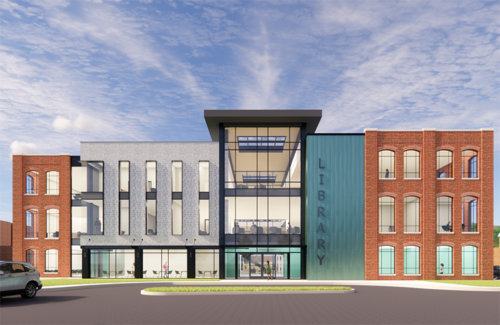
Eaton announced that it will provide 370 kW solar microgrid for the New Manchester Public Library in Connecticut to help the building reach zero net energy consumption (ZNE) readiness. The newly built library will implement grid interactive renewable energy, battery storage, and electric vehicle (EV) charging, which will help maximize energy savings and alleviate the pressure on the local power grid. The project is scheduled to be completed in 2026 and aims to achieve zero net energy (ZNE) readiness. Eaton uses its "building is grid" approach to achieve a flexible energy system, enabling Manchester Town to strategically balance energy production and consumption, while enhancing grid flexibility. Eaton will synchronize on-site renewable energy, energy storage, and electric vehicle charging with the local energy market, enabling libraries to optimize energy use and enabling utility companies to better manage peak demand and support the grid. Paul Ryan, vice president and general manager of Eaton Energy Transformation, said: "The new Manchester Public Library shows how smart energy management can reduce the cost and demand of the power grid, while optimizing flexibility and sustainability." "We believe that our proven smart power management solutions and expertise will benefit Manchester Town and its residents in the coming decades." Eaton is providing power infrastructure, turnkey engineering services, and return on investment (ROI) modeling for the project. With its microgrid control solution and grid interactive xStorage Battery Energy Storage System (BESS), Eaton will help libraries maximize on-site solar energy consumption and output excess power to support grid stability. In addition, Eaton also utilizes its industry-leading electric vehicle charging partnership with ChargePoint to provide vehicle charging infrastructure that helps intelligently reduce costs, effectively manage site power demand, and improve reliability. "Our community strongly supports our investment in this state-of-the-art library as a beacon of sustainable development, innovation and education," said Steve Stephanou, mayor of Manchester. Eaton's forward-looking solutions and strong relationship with the project team are crucial for us to turn our goal of building Connecticut's first net zero public library into a reality The project is supported by federal tax credits, state and local funding, and incentives provided through energy storage solutions programs. The program is supervised by the Public Utility Regulatory Authority (PURA), paid for by electricity taxpayers, and managed by Connecticut Green Bank, Eversource, and United Lighting Company (UI). Learn more about how Eaton can help future grid interactive buildings achieve electrification.
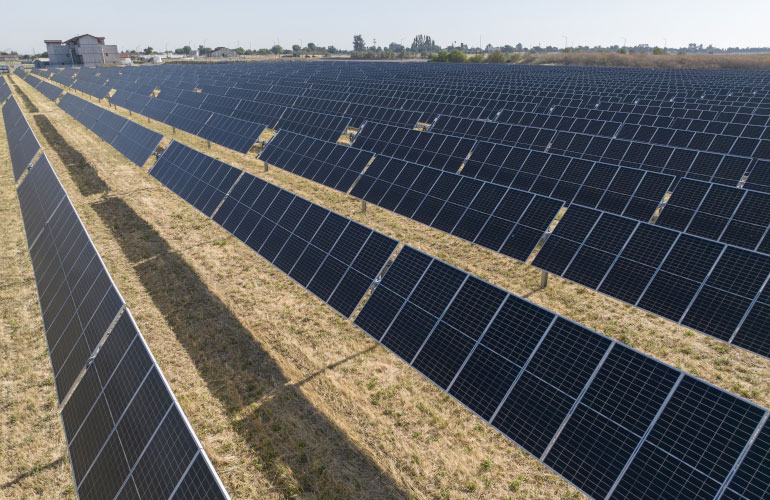
The Uniform Beauty Act (OBBBA) establishes new rules for which types of solar products are eligible for certain tax credits. The Foreign Entity of Concern (FEOC) rules refuse to provide federal investment tax credits to projects that use too many Chinese components, and prevent US made products that use too many Chinese components from obtaining Section 45X credits. For the solar panel market, this is a complex operation and it is almost impossible to completely avoid using certain Chinese components in the final product. The FEOC rules also refuse to provide tax credits to companies that have Chinese investments or operate under Chinese technology licenses. The market is still waiting for the final explanation from the Ministry of Finance (now expected to be released at some point in 2026), but since HR1 was passed, there has been a wave of clean-up in the supply chain and finance. Companies with manufacturing factories in the United States under the influence of China have been selling or changing business ownership to comply with assumed FEOC requirements. JinkoSolar sells its Dallas solar panel assembly plant to T1 Energy; JA Solar sells its Phoenix solar panel factory to Corning; And Canadian Solar has established a new US division to own its solar panel and battery business related to the US market. Roth Capital Partners stated that multiple contacts in Washington have stated that "the government knows what FEOC is, and if the majority of the business is in China and the intellectual property used is Chinese [or] Chinese companies have effective control, then no matter how many reorganizations, ownership changes, or legal operations are carried out, it is unlikely to be effective. ”

A letter organized by the Solar Industry Association and signed by 143 solar companies has been submitted to the US Senate and House of Representatives in response to a memorandum from the Department of Interior (DOI) that effectively suspended all licenses for solar projects involving the department. Federal agencies are implementing this directive in a manner that almost completely suspends permits for Interior Department involvement in any projects on federal and private land, regardless of their importance, "the letter reads. Businesses need certainty in order to continue investing in much-needed energy projects in the United States. Certainty must include a non discriminatory review process of energy sources. We urge Congress to place fairness and certainty at the center of licensing negotiations The memorandum was released in July and involves federal permits for wind and solar energy projects to be carried out on locations that belong to or are adjacent to federal land or use federal resources. The memorandum states that all "decisions, actions, negotiations, and other initiatives" regarding wind and solar energy facilities must be submitted to the Executive Secretary and the Office of Regulatory Affairs, followed by review by the Office of the Deputy Secretary and final review by the Office of the Secretary, followed by 69 different licensing projects under DOI jurisdiction. For the solar industry in the United States, licensing reform begins with licensing certainty, "said Abigail Ross Hopper, President and CEO of SEIA, in a statement. As 143 solar energy companies wrote in this letter to our congressional leaders, if action is not taken to address unequal treatment of solar energy, the industry will continue to face significant barriers to deployment and investment when energy demand surges. While the solar industry values continued bipartisan cooperation on licensing reform, the SPEED bill, as passed by the committee, fails to address this core issue: ongoing licensing moratoria. ” SEIA released an analysis report in November estimating, based on data from the Energy Information Administration (EIA), that over 500 solar and energy storage projects with a total capacity of 116 gigawatts have been put on hold due to license changes from DOI. To be clear, we certainly need reform permits, "Hopper said. An agreement must be reached, and SEIA and our 1200 member companies will continue our months long efforts to advocate for an agreement that ensures equal treatment for all energy sources, as the current state of lockdown is unsustainable.
Categories
New Products
Tin Roof Rapid Solar Mounting System with Hanger Bolt Read More
Residential Small Solar Easy Bracket Kit for Home Balcony Read More
Automatic Single Pile Solar Tracker with 10 PV Panels Read More
Angle Adjustable Aluminum Easy Solar Panel Bracket for Garden Read More
Intelligent Single Post Dual Row Solar Tracking System Read More
5000ES Solar Off-Grid Energy Storage Inverter Supplier Read More
Multi Drive Double-Sided Single Axis Tracker System Read More
© Copyright: 2025 Xiamen Wintop New Energy Tech Co., Ltd.. All Rights Reserved.

IPv6 network supported
Friendly Links:
Integrated Solar System